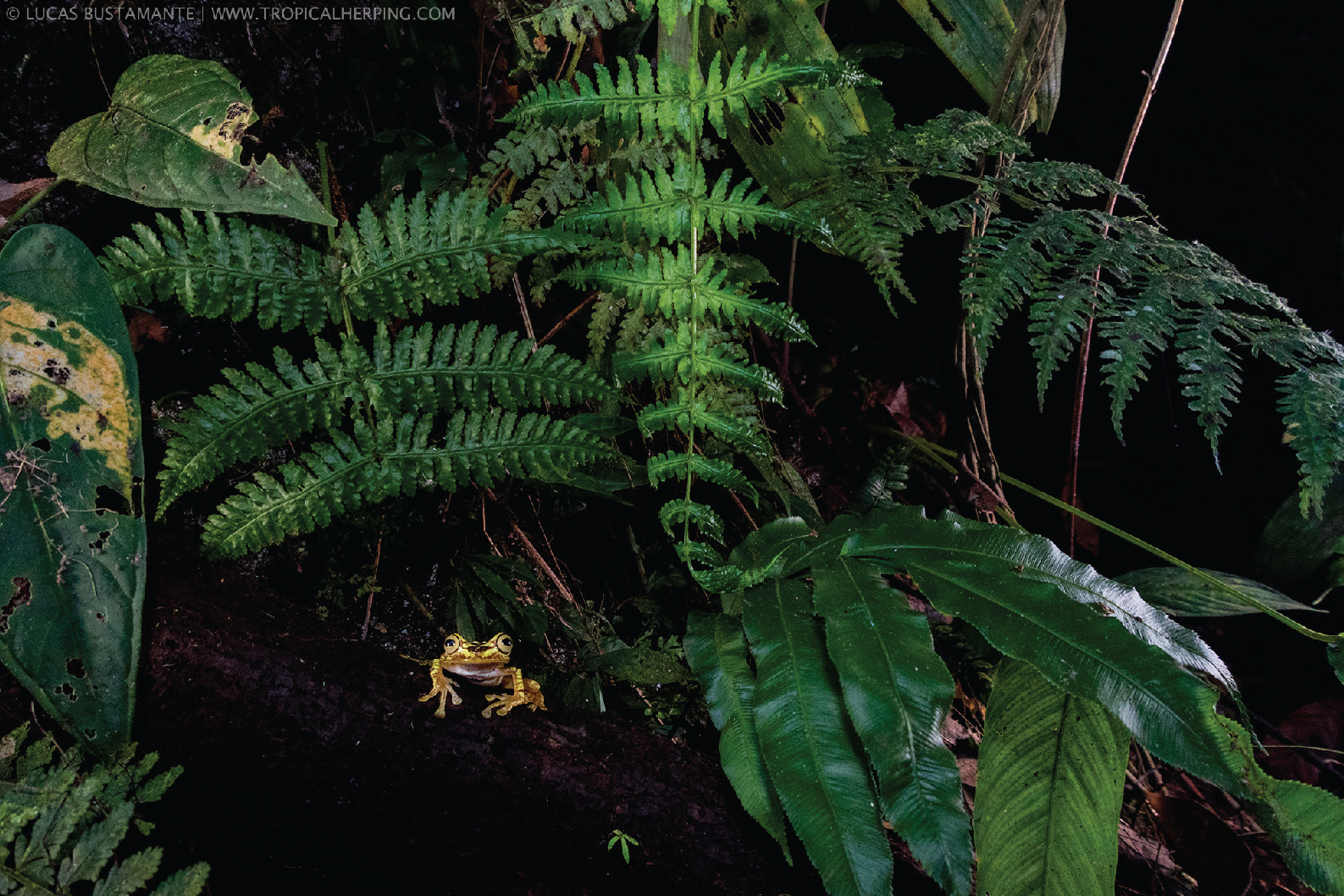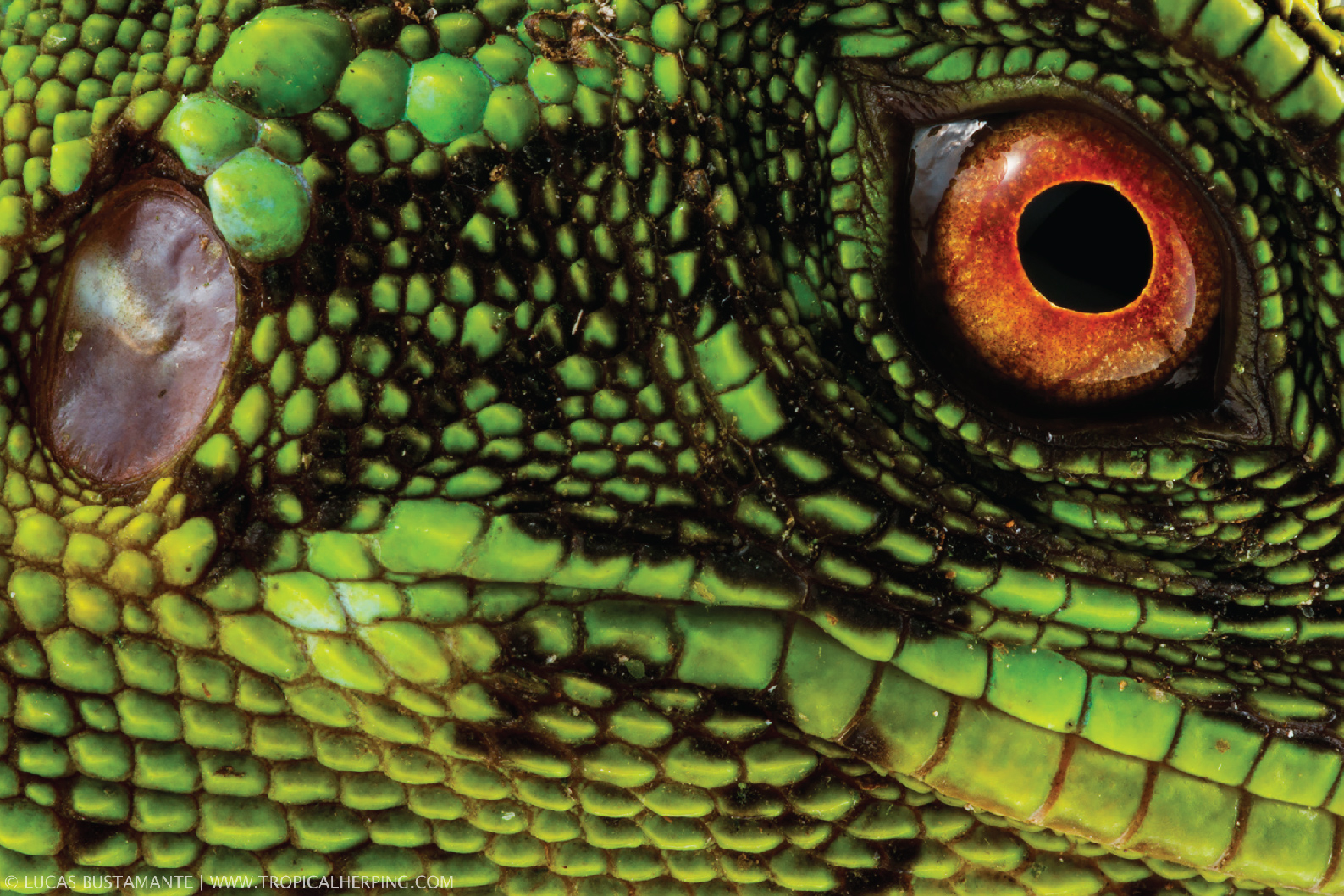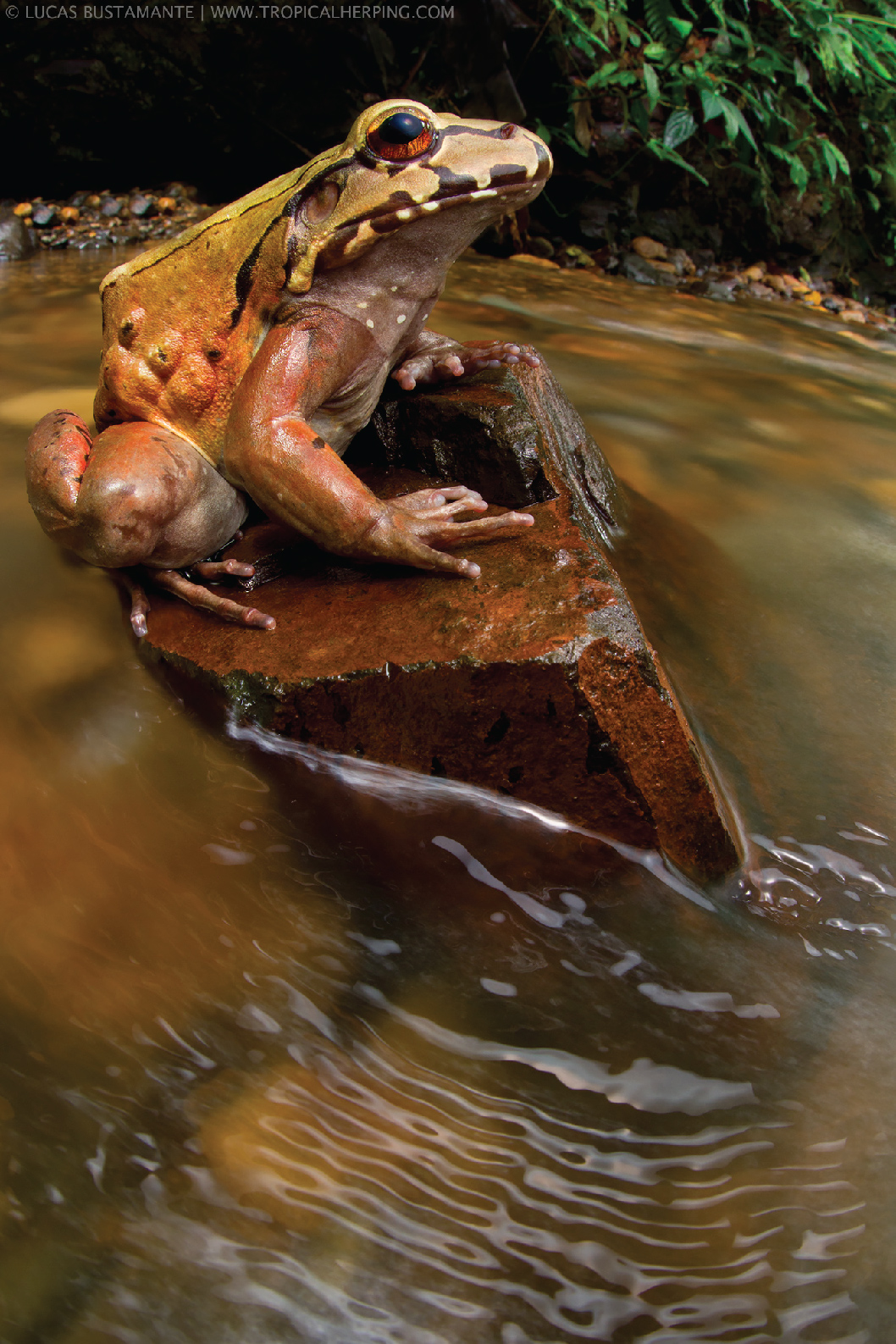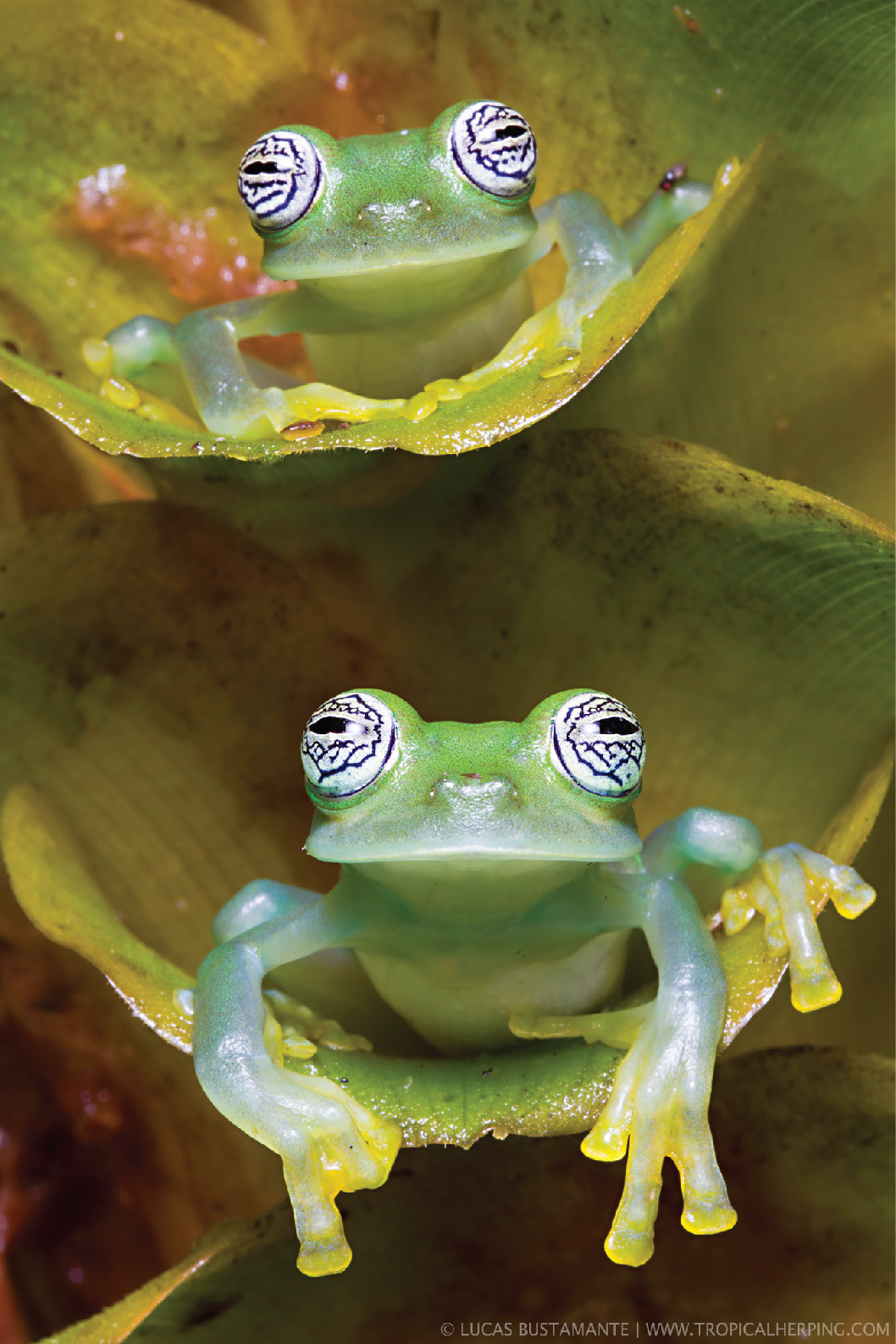BIG WIN FOR JOCOTOCO'S CANANDÉ RESERVE!
FCAT (Fundación para la Conservación de los Andes Tropicales)
Save the Chocó would like to introduce you to FCAT (Fundación para la Conservación de los Andes Tropicales). FCAT is a grassroots, award-winning Ecuadorian NGO dedicated to conserving endangered species and threatened habitat in the Tropical Andes. They are dedicated to empowering local communities, restoring/protecting vanishing forests, and conserving endangered species. FCAT has over 20 years of continuous experience in northwest Ecuador. FCAT protects 550 ha in the lowlands of western Eucuador which is home to numerous Endangered species. Their income diversification, education, and capacity building initiatives ensure communities are equal partners that directly benefit from the conservation of biodiversity.
PROJECT CANANDÉ-TESORO
Click the button below to learn more about what we are doing and you can do to help save the Chocó.
Oophaga histronica
Local guide Don Blas has been guiding in the Colombian Chocó for over ten years. He is happy and proud that his community has made it through the violence and has been at peace since 2006. He works with university UNISARC to help educate his community and protect the local flora and fauna. When I spent a day exploring the lowlands with Don Blas he said, "Local ecotourism has helped strengthen the forest and the people in the community are now benefiting and generating income from conserving the land through tourism."
Guides like Don Blas have turned to ecotourism and are helping amphibians like this beautiful Oophaga histronica survive in the wild. Endemic to the Colombian Chocó, they have a variety of color morphs, which differ from one site to the next. Due to their color variety they have become very popular in the pet trade and have had significant declines from illegal poaching and habitat loss. This morph is called "bullseye" and has been in the pet trade dating back to the 90's but has only been legally traded starting four years ago. Meeting people like Don Blas gives me great hope that the amazing flora and fauna that call the Colombian Chocó home has a chance to thrive in these modern times.
PC: James Muchmore, Save the Chocó
REDISCOVERY!
PC: Frank Pichardo
After 18 years without seeing the Horned Marsupial-Frog (Gastrotheca cornuta) in Ecuador, Tropical Herping rediscovered it in a remote part of the Chocó. To learn more about this amazing discovery please click here REDISCOVERY! To help save this species and many more like it please click here DONATIONS!
Paradise gained or lost?
As you work your way down the Andes towards the coast of Ecuador you enter one of the most biodiverse and threatened regions in the world. The Tumbes-Chocó-Magdalena biodiversity hotspot boasts extremely high levels of species diversity and endemism. The region is home to more than 11,000 species of vascular plants and over 900 species of birds. Sixty two of the bird species are restricted-range species (only found in the Chocó) the highest level in the Americas and one of the highest in the world. With such high levels of endemism come high levels of risk. Simulation models suggested that one third of the Tumbesian and Chocó endemic species will become extinct if an additional 1,000 km² of habitat is lost, which ranks the region among the most threatened global biodiversity hotspots*. Approximately 98% of native forest in coastal Ecuador has been cleared, rendering it one of the three most threatened tropical forests in the world **,***
Moss-backed Tanager (Bangsia edwardsi)
The remaining 2% is a patchwork of forest, some here and some there. One of the last strongholds is the Canandé region. Canandé harbors a number of globally threatened birds, many of them endemic to the Chocó such as Plumbeous Forest Falcon (VU), Great Green Macaw (EN), Scarlet-breasted Dacnis (VU), Baudo Guan (EN), Banded Ground Cuckoo (EN), Brown Wood-rail (VU), and Plumbeous Hawk (VU). More than 100 species of mammals have been recorded so far including the Jaguar (Pantera onca ). The Canandé area holds probably the most important population of the critically endangered Brown-headed Spider Monkey (Ateles fusciceps ), one of the 25 most endangered primates worldwide. The staggering tree diversity is worth mentioning too- the area harbors the largest population of one of the rarest endemic species in Ecuador, the endangered Ecuadendrum acosta - solisianum which is only known to exist in two localities.
Unfortunately, this remote haven isn’t free from the pressures to which the rest of the forest have succumbed. Heavy logging, palm oil, and burn and slash agriculture are all very present. With each secret revealed (Harpy Eagle, Jaguars, Banded Ground Cuckoos, or new species) it reminds me how important this remaining patch of forest is and quickly it can go from paradise to paradise lost.
Oophaga sylvatica Near Threatened
If you would like to make a donation please visit https://www.rainforesttrust.org/savethechoco/
Follow us on Instagram https://www.instagram.com/save_the_choco/
1. Brooks TM, Mittermeier RA, Mittermeier CG, Da Fonseca GAB, Rylands AB, Konstant WR, Flick P, Pilgrim J, Oldfield S, Magin G, Hilton-Taylor C (2002) Hotspots: Earth’s biologically richest and most endangered terrestrial ecoregions. Conserv Biol 16:909-923.
2. Dodson CH, Gentry AH 1991: Biological extinction in western Ecuador. Ann Missouri Bot Gard. 78: 273–295.
3. Mosandl R, Günter S, Stimm B, and Weber M 2008: Ecuador suffers the highest deforestation rate in South America. Ecological Studies 198: Gradients in a tropical mountain ecosystem of Ecuador. Heidelberg, Germany: Springer Verlag;. pp. 37–40.
Brown-headed spider monkey (Ateles fusciceps fusciceps) Critically Endangered
Harpy Eagle!
A Harpy Eagle has been spotted at Tesoro Escondido. These Eagles are very uncommon in the Ecuadorian Chocó so it is very exciting to hear. It's great to see that our partner Fundación Jocotoco's work is paying off. Check out the link below. #savethechoco #TesorEscondido
Third Millennium Alliance
We are very happy to announce that we are teaming up with Third Millennium Alliance to help protect the Chocó.
Third Millennium Alliance (TMA) is an international conservation organization founded in 2007 that is dedicated to preserving and restoring the last remnants of Ecuador's coastal forests. TMA achieves its mission through a holistic five-pronged approach to conservation that includes: strategic and targeted land purchase, reforestation of the degraded landscape, ecological and agro-ecological research, field-based education programs, and community engagement and participation.
The pride and joy of TMA is the 600 hectare Jama-Coque Reserve, which is located at the biologically important Tumbes-Choco transition zone of northwest Ecuador where some of the world's driest (i.e. Tropical Dry) and wettest (i.e. Choco) forests meet. Tropical dry forest, semi-deciduous forest, and Choco forests can all be found within a distance of three km of the Jama-Coaque Reserve. TMA's current conservation focus is the establishment of a conservation corridor across these three unique ecosystems, that once complete, will protect over 1,000 hectares of critically threatened forests. The Jama-Coaque Reserve is also home to Ecuador's first international bird observatory (Jama-Coaque Bird Observatory), which acts as an important center of avian research and ornithological training.
To learn more about their great work check out www.tmalliance.org.
We are on instagram!
If you haven't already followed us please do. Save_the_Chocó
Thanks to dedicated supporters Matthew Sullivan, Devin Bergquist, and Seth Cohen for starting the Save the Chocó Instagram page the first week of 2018. We appreciate all the support.
Rio Canandé
Trachyboa boulengeri Photo by James H. Muchmore Jr.
A recent biological survey of Jocotoco's Rio Canandé Reserve has unveiled many new species of reptiles and amphibians never before documented on the reserve. These new findings make the reserve “the most herpetologically diverse area in the world outside of the Amazon" says Rainforest Trust who supported the expeditions. It is also another example of why we must work to protect what is left. Great work by Fundacion Jocotoco, Tropical Herping, and Rainforest Trust.
To learn more goo.gl/5nquKy
1Frame4Nature | Lucas Bustamante | National Geographic | Voices
We have featured work by Lucas Bustamante before. National Geographic's Voices website recently featured Lucas' write up about the Chocó. We appreciate his support and the mention of the Save the Chocó project. Click on the image to read the full article.
JANUARY 12, 2017: SAVE THE CHOCÓ ART AUCTION
We are hosting an art auction for the Save the Choco project on January 12th in NYC! We have a bunch of amazing artists, photographers, designers, and authors who have donated great work to be auctioned. Stay tuned for an announcement of the contributors next week. We hope you can be there! CLICK ON IMAGE FOR EVENT PAGE.
Feature: Lucas M. Bustamante
Today we are featuring Lucas M. Bustamante who is one of the founders of Tropical Herping, a biologist, and a conservation photographer. He is an Ecuadorian who has spent the last eight years exploring his country and documenting the country’s wildlife. I hope you enjoy these comments and photographs from Lucas:
“Tropical regions hold the vast majority of biodiversity on Earth. Among all of the tropical countries, one of the jewels is Ecuador. Smaller than the state of Arizona, this tiny nation holds many ecosystems: the Amazon, Andes, Chocó, Dry forest, and Galápagos. This, in addition to its eternal spring weather, makes it easy to find tons of species throughout the country.
Among vertebrates, the most threatened group are the amphibians: climate change, emerging diseases, pollution, introduction of alien species, and lost habitat are the most important factors for their declines. Ecuador holds 8% of all amphibian diversity, but also has the highest number of endangered species - the vast majority of them are amphibians.
Ecuador has two of the best places in the world to find amphibian diversity. One of them is the famous Yasuni National Park in the Amazon, which arguably is the most biodiverse area on Earth. The second is the western side of the Andes - the Chocó region, one of the 25 global biodiversity hotspots. There are many threats to both regions: Yasuni: oil exploitation, wildlife trafficking, deforestation, and colonization; in the case of the Chocó: palm oil, crops, lumber companies, and slash and burn agriculture.
With this quick intro, I want to introduce you to some of the magical amphibians and reptiles that blew my mind and touched my heart during my last 8 years working in Ecuador as a biologist and a conservation photographer. All of these photographs are from the Ecuadorian Chocó region, where less than 5% of the forest remains intact. This small world is not featured very often in newspapers, videos, or news about conservation or biodiversity, mainly because the region is unknown and the wildlife is elusive. Nevertheless, amphibians and reptiles are the core of all ecosystems and possibly the best indicators of well-preserved habitats.
Can you imagine those forests without all these colorful critters jumping all over? I cannot. It will not only be a loss for Ecuadorians but for mankind. We can always find a light at the end of the tunnel: some conservation organizations, universities, and NGOs are trying to do their best to preserve what we have left. Among them, Jocotoco, Otonga, Ceiba, Mashpi, Itapoa and Anfibios Web Ecuador are the most recognized working in the area along with Save The Choco.
Conservation is not just an organization’s responsibility, it can start with each of us taking a look where our wood comes from, not purchasing exotic animals, trying to avoid products with palm oil, educating the new generations about the importance of rainforests, supporting governments that believe in conservation and environmental issues... Small things and changes can create huge differences, making us directly or indirectly actors of the conservation of tropical areas. We have to act now; we are already late… but with enough time to change the course of what we left!”
Somebody's Watching Me
I always feel like somebody's watching meeeeee. When I'm hiking at night. #savethechoco
Sachatamia albomaculata
Incilius coniferous
Hypsiboas picturatus
Cochranella mache
Cochranella mache habitat.
Chocó Birds
Birding in the Chocó is some of the most challenging. It's remote, really wet, muddy, and always misting. Silhouettes are common. But with the challenges come rewards. Here are some of the more common birds you'll see on the forest edge.
Chestnut-mandibled Toucan (Ramphastos swainsonii)
Rose-faced Parrot (Pyrilia pulchra)
Orange-bellied Euphonia (Euphonia xanthogaster)
Green Honeycreeper (Chlorophanes spiza)
Choco Tyrannulet (Zimmerius albigularis)
Rufous-headed Chachalaca (Ortalis erythroptera)
Red-lored Parrot (Amazona autumnalis)
Little Devil
One of my favorite species of amphibians in the Chocó is Oophaga Sylvatica or commonly referred to as diablito, little devil. The genus Oophaga is made up of nine species and translates to "egg eater". The name is referring to the tadpole’s diet. The female will deposit an unfertilized egg into the water for her tadpole to eat. It's always fun to find O. Sylvatica because their color morphs differ from site to site. Here are some of the variations I've been able to photograph in the wild.
Habitat























































